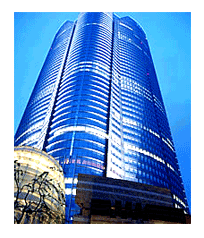November 13, 2006 –

When an asset class has been downtrodden for a long period of time, I tend to look at it and assess whether conditions have changed that now favor an awakening from long periods of hibernation. Japanese REITs, or J-REITs as they are better known, may just be one of those opportunities, specifically apartment/residential REITs in Tokyo. There is almost nothing uglier than Japanese real estate right now. By ugly, I mean an asset class that nobody likes, but not necessarily an asset class that does not offer opportunities. On the good side are REITs that are emerging and poised for rapid growth. Hotel and resort REITs in Shanghai and Beijing fit this bill. And as for the bad, well, just avoid the bad.
Even though most JREITs seem fairly valued right now, there are other cautionary factors that must be considered. Because the Bank of Japan had kept their interest rates at zero for so long (before finally recently raising them) to stimulate the Japanese economy, as the Japanese economy strengthens, interest rates are likely to rise further. Although the average dividend yield for J-REITs is currently 4.6%, to offset an interest rate increase of 1%, in order for J-REIT yields to also rise another 1%, it is estimated that concurrent rents would have to rise a steep 13.5%.
However, many properties owned by JREITs have extremely high occupancy rates, so tenant income flow is consistent and reliable, offsetting some of the other risks of JREITs such as bureaucratic REIT laws that currently make independent management and M&A of the J-REIT industry difficult. For this reason, JREITs have some of the largest yield gaps (as compared to 10-year bonds) of any developed country.
However, there are still many positive things to like about J-REITs and many reasons to consider scouring residential/ apartment J-REITs in Tokyo now rather than later. Number one, although the average J-REIT NAV (net asset value) premium is 12%, there are actually some J-REITs now with grade A properties that trade at a discount to their NAV. That is not a misprint. The combined book (appraisal) value of properties held in some J-REITs is actually more than the NAV of the offered JREIT shares. These undervalued J-REITs are the ones that I believe merit the most attention due to the compelling risk-reward setups they offer. What better value can you get than buying properties at costs less than their appraised values?
Furthermore, as some of the regulatory issues governing J-REITs become sorted out, and the entire legal system becomes less bureaucratic and cumbersome, some of these J-REITs that sell at less than book value now will become promising acquisition targets for larger J-REITs and thus could experience a rapid appreciation in share price upon acquisition. However, a word of warning. These issues could very well become more bureaucratic before they become less so as growing pains will undoubtedly happen in the attempt to become more streamlined.
Therefore, I foresee the reward in J-REITs as a long-term outlook. Thirdly, the valuation of some J-REITs became depressed as foreign money left the Japanese stock market, and not due to fundamental flaws in the J-REITs themselves. As foreign money re-enters the Japanese markets as I expect in 2007, which also would make the Japan i-shares a possibly compelling buy in 2007, this influx of foreign money should also provide a boost to the J-REIT industry.
I know many people will disagree with me about Japan’s economy but anytime a long recession has plagued a country, investors, both domestic and foreign, remain understandably gun-shy and momentum will take some time to build. For example, a stronger employment environment and stronger wages have yet to show up in the Japanese economy through increased spending patterns. But it will. And for this reason, the Japanese finance sector is another area to take a peek at, for the financial industry always leads the way in stronger growth economies.
For a shorter-term return on REIT investments in Asia, China may be the place to look. Starwood Asia-Pacific president, Mr. Miguel Ko, stated in the Shanghai Daily that his hope is that China will contribute 50 per cent of their total profits from the Asia-Pacific region in the next three to five years as opposed to their current 20% contribution. Part of these lofty estimated increases is undoubtedly due to the hotel and resort construction boom that is occurring in preparation for the 2008 Beijing Olympics.
The director of Beijing Tourism Bureau, Du Jiang, recently stated that there are over 110 hotels being constructed in Beijing alone in preparation for the 2008 Olympics, “with a majority of them targeting high-end guests.” Beijing hotels are expected to accommodate about 550,000 guests per day during the Olympics. Therefore, Beijing and Shanghai REITs that hold high-end hotels and resort properties may offer some nice investment opportunities now.
In June 2005, Hong Kong regulations were amended to allow HK REITs to invest overseas, including in properties in mainland China. So for now, HK REITs invested in Beijing and Shanghai properties may be the way to go.
To learn more about real estate investment opportunities in Asia, you can attend the 2nd Annual Real Estate Investment Conference 2006 at the Conrad Hotel in Hong Kong on November 15th and 16th. Specifically to learn more about J-REITs you can also attend the upcoming Japanese real estate conference at the Four Seasons Hotel Chinzan-so in Tokyo on November 27 -29.
On tap for casual Friday: What if Buddha Invested?